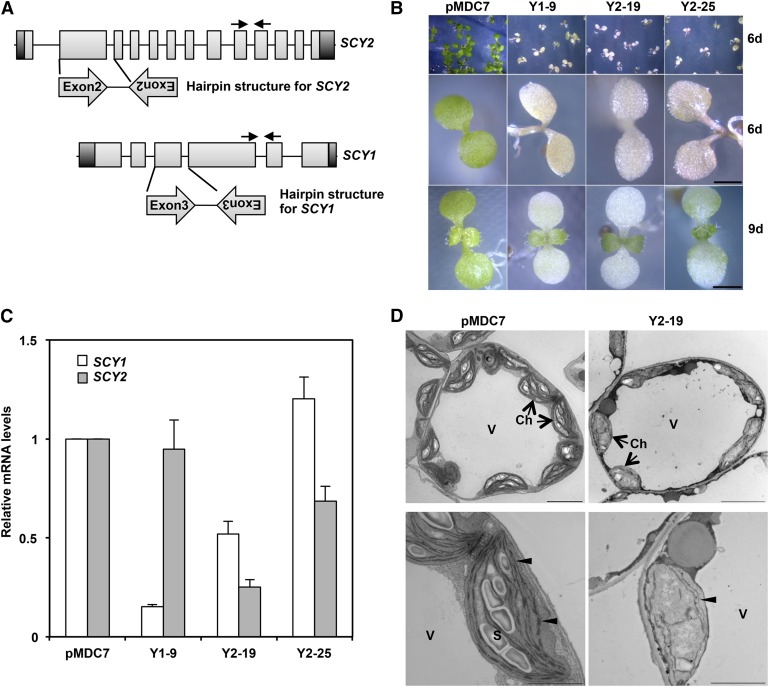Figure 1.
RNAi-mediated silencing of SCY2 and SCY1 results in chlorotic cotyledons in Arabidopsis. A, Scheme of inducible RNAi constructs used to silence SCY2 or SCY1 in Arabidopsis. The hairpin structures were generated from the most diverged regions between SCY2 (the second exon and intron) and SCY1 (the third exon and intron) and cloned downstream of the estrogen-inducible promoter XEV in the pMDC7 vector. Black arrows mark the positions of primers used in quantitative real-time (qRT)-PCR to quantify SCY2 and SCY1 transcripts. B, Phenotypes of 6-d-old (top and middle rows) and 9-d-old (bottom row) seedlings germinated on MS medium containing 15 μg mL−1 hygromycin and 20 μm estrogen. pMDC7, Empty vector; Y1-9, SCY1-RNAi; Y2-19 and Y2-25, two lines of SCY2-RNAi. Bars = 1 mm. C, Relative mRNA levels of SCY1 (white bars) and SCY2 (gray bars) in 6-d-old seedlings germinated on MS medium containing 20 μm estrogen as determined by qRT-PCR analysis. Data represent mean values of at least four biological replicates and are normalized to the control (pMDC7). Error bars indicate se. D, Electron micrograph images of cotyledon mesophyll cells of 6-d-old seedlings germinated on MS medium with 20 μm estrogen. The top row shows overviews of mesophyll cells from the empty vector control (pMDC7) or SCY2-RNAi (Y2-19) cotyledons, and the bottom row shows higher magnification views of individual plastids from the same cells. The number of starch grains (S) is reduced significantly, and thylakoids (arrowheads) are undeveloped in SCY2-RNAi plastids. Ch, Chloroplast; V, vacuole. Bars = 5 μm (top row) and 2 μm (bottom row).

